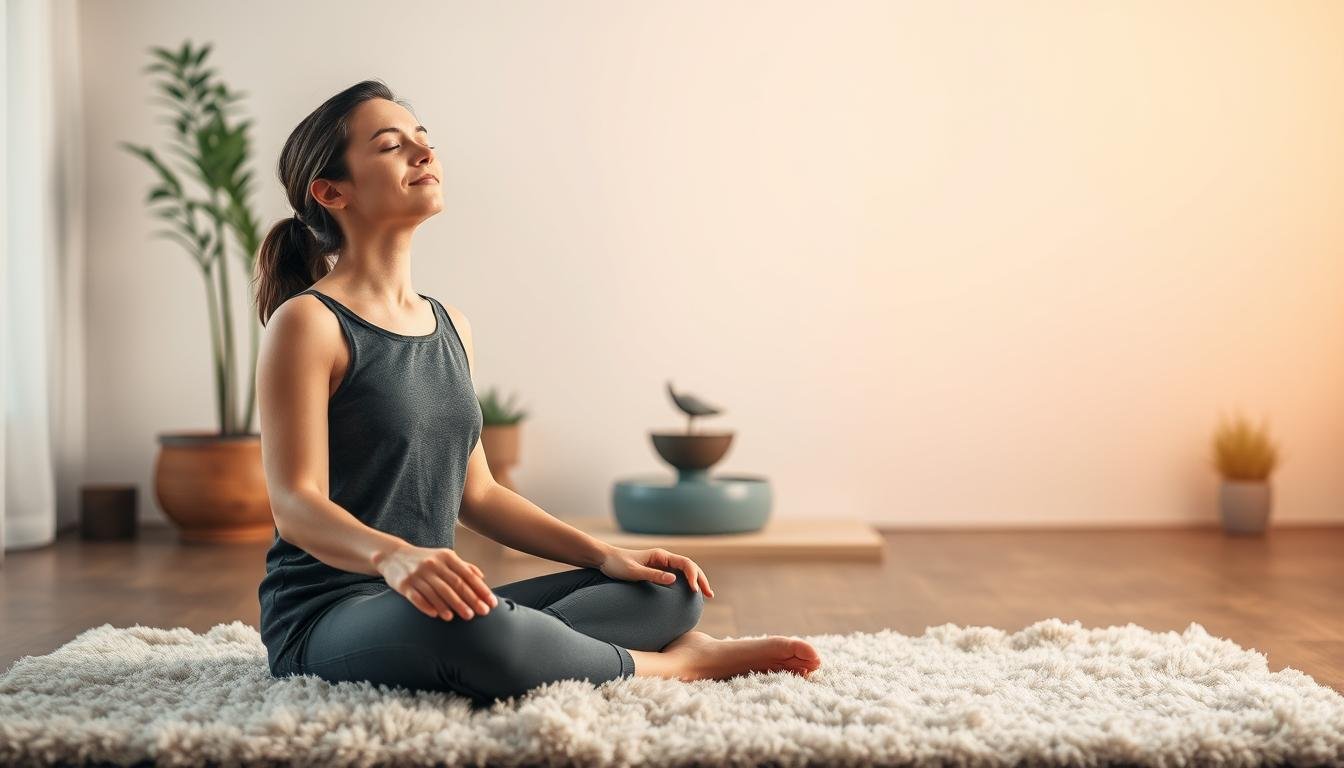We know that anxiety relief is a big concern for many. Simple breathing techniques can be a strong tool against anxiety.
Adding breathing exercises to your daily life can really help lower anxiety. These methods are simple to learn and work for everyone, no matter their skill level.
We aim to help you use breathing techniques for anxiety relief. We’ll look at the benefits and give you a detailed guide to start.
Key Takeaways
- Simple breathing techniques can help alleviate anxiety.
- Breathing exercises are easy to learn and practice.
- Regular practice can lead to significant anxiety relief.
- These techniques are suitable for beginners and experienced practitioners alike.
- Breathing exercises can be a valuable addition to your daily routine.
Understanding the Connection Between Breathing and Anxiety
The link between breathing and anxiety is complex. Anxiety can change how we breathe. This affects our body’s stress response.
How Anxiety Affects Your Breathing Patterns
Anxiety makes our breathing quick and shallow. It often involves the upper chest, not the diaphragm. This can lower oxygen in the blood and make us feel dizzy or panicked.
Knowing how anxiety changes our breathing helps us find ways to fight it.
The Physiological Benefits of Controlled Breathing
Controlled breathing offers many benefits. It can slow the heart rate, lower blood pressure, and reduce stress hormones. It activates the parasympathetic nervous system, which helps us relax and feel less anxious.
This can reduce symptoms like a racing heart and trembling.
The Science Behind Breathing Exercises for Anxiety
Understanding the science behind breathing exercises helps us see their value in managing anxiety. These techniques have been around for centuries. But recent research has shown how they work on our bodies.
How Proper Breathing Activates the Parasympathetic Nervous System
Proper breathing activates the parasympathetic nervous system (PNS). This system helps us relax and lowers stress. It works against the “fight or flight” response of the sympathetic nervous system.
When we breathe right, it tells our brain to calm down. This makes our body and mind relax. The PNS lowers our heart rate, blood pressure, and stress hormones.
This happens because of special chemicals like acetylcholine and GABA. They help calm our nervous system.
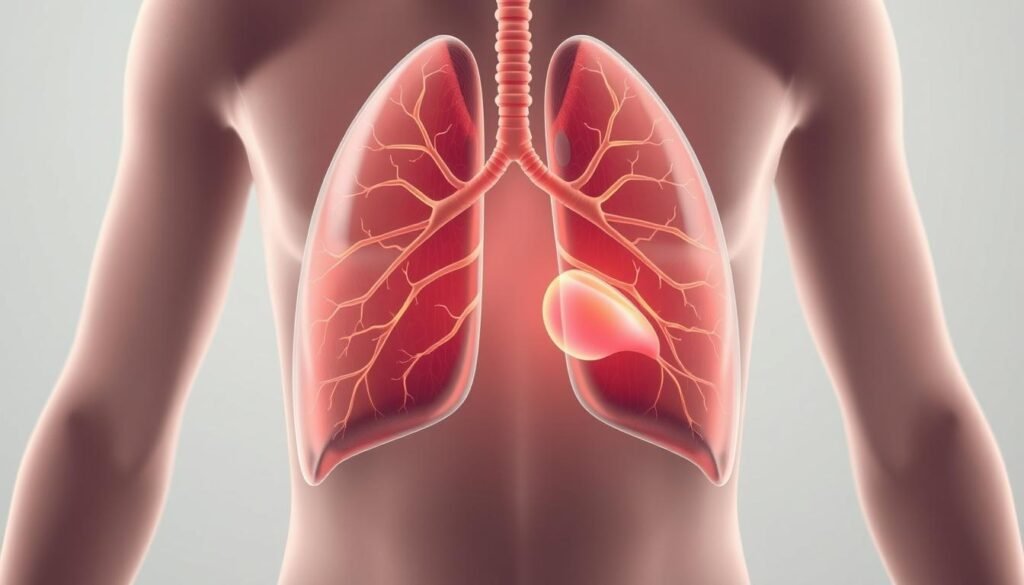
Research-Backed Evidence on Breathing Techniques
Many studies have looked into how breathing helps with anxiety. They found that methods like diaphragmatic breathing and alternate nostril breathing work well. Box breathing also helps reduce anxiety and stress.
| Breathing Technique | Anxiety Reduction | Physiological Effects |
|---|---|---|
| Diaphragmatic Breathing | Significant reduction in anxiety symptoms | Decreased heart rate, blood pressure |
| Alternate Nostril Breathing | Balancing effect on the nervous system | Reduced cortisol levels, improved cognitive function |
| Box Breathing | Immediate calm, reduced stress | Slowed heart rate, increased oxygenation |
These studies show that breathing exercises are a good way to manage anxiety. They offer strong evidence for using them as a therapy.
Preparing Your Mind and Body for Breathing Exercises
Before starting breathing exercises, it’s key to get your mind and body ready. This preparation boosts the exercises’ effectiveness. It helps you relax and feel less anxious.
Finding a Comfortable Position
First, pick a comfy spot to sit or lie down. This spot should let you breathe easily and focus. Make sure your back is straight for better breathing. Try out different poses to see what feels right for you.
Creating the Right Environment
Next, choose a quiet place for your practice. Dim the lights or use calming scents like lavender. A calm setting helps you relax more.
Setting Realistic Expectations
Lastly, have realistic goals. Remember, breathing exercises take time to show results. Focus on the journey, not just the end goal. Be patient with yourself.
| Preparation Tips | Benefits |
|---|---|
| Finding a comfortable position | Reduces physical distractions |
| Creating the right environment | Enhances relaxation |
| Setting realistic expectations | Fosters consistent practice |
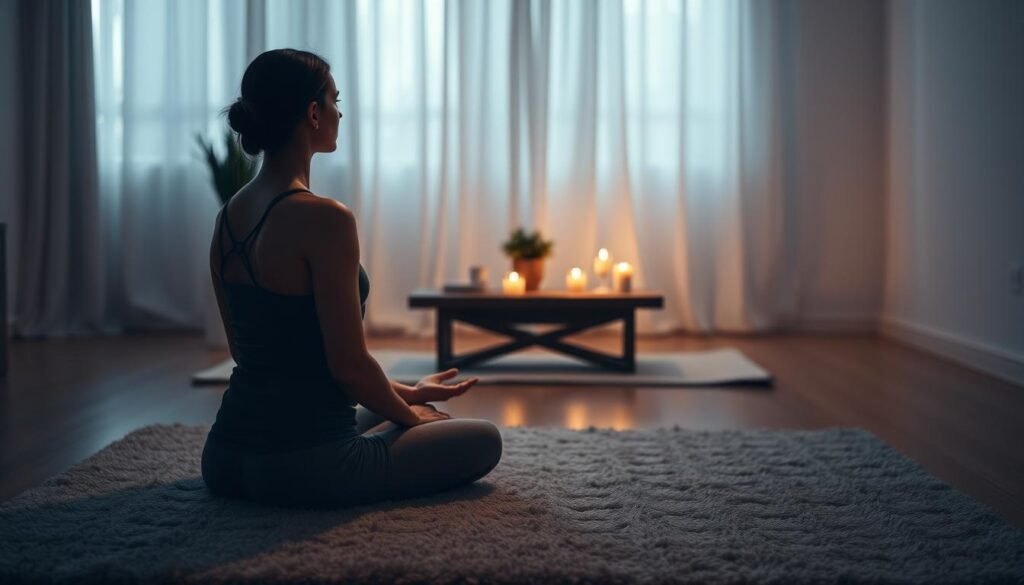
By following these tips, you’ll set up a perfect space for your breathing exercises. This way, you can enjoy their full benefits.
Effective Breathing Exercises for Anxiety Relief
To ease anxiety, learning different breathing exercises is key. These can be done daily. They calm the mind and lessen physical symptoms of anxiety.
Diaphragmatic (Belly) Breathing Technique
Diaphragmatic breathing, or belly breathing, uses the diaphragm muscle. It’s more efficient and helps reduce anxiety by promoting relaxation.
Step-by-Step Instructions
To do diaphragmatic breathing, place one hand on your belly and the other on your chest. Inhale slowly through your nose, letting your belly rise. Your chest should not move. Exhale slowly through your mouth, letting your belly fall.
Common Mistakes to Avoid
A common error is breathing into the chest instead of the belly. Another is breathing too quickly or shallowly. Regular practice helps develop this breathing habit.
Equal Breathing (Sama Vritti)
Equal breathing, or Sama Vritti, means breathing in and out through the nose for the same count. It balances the breath and calms the nervous system, reducing anxiety.
To practice, inhale for a count of four, then exhale for a count of four. Keep the same count for both.
4-7-8 Breathing Method
The 4-7-8 breathing method, or “Relaxation Breath,” involves breathing in through the nose for four counts. Hold for seven counts, then exhale through the mouth for eight counts. It slows your heart rate and promotes relaxation.
| Breathing Technique | Inhale Count | Hold Count | Exhale Count |
|---|---|---|---|
| Diaphragmatic Breathing | Slow, deep breath | Optional | Slow, controlled |
| Equal Breathing | 4 | 0 | 4 |
| 4-7-8 Breathing | 4 | 7 | 8 |
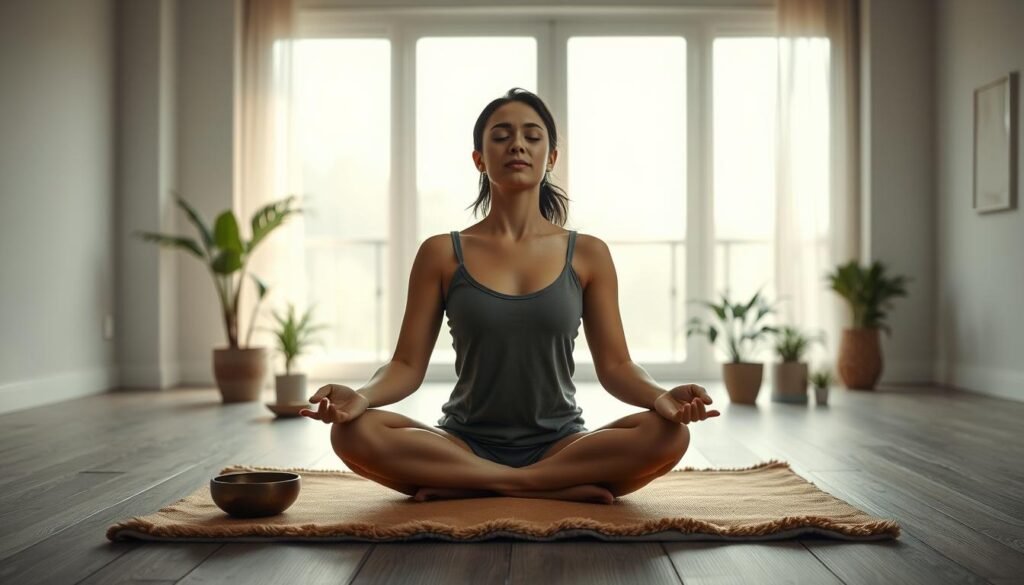
Box Breathing: A Powerful Technique for Immediate Calm
Box breathing is a simple yet effective way to find calm quickly. It involves breathing in for 4 counts, holding for 4 counts, exhaling for 4 counts, and holding again for 4 counts. This creates a “box” shape with your breath.
Step-by-Step Guide to Box Breathing
Start by sitting comfortably with your back straight. Close your eyes and breathe in through your nose for 4 counts. Hold your breath for 4 counts. Then, exhale through your mouth for 4 counts. Finally, hold your breath again for 4 counts. This is one cycle.
Visual Aids for Better Practice
Visual aids can make box breathing easier. Use a diagram or timer to keep track of your breath. Some draw a box on paper and trace it as they breathe. 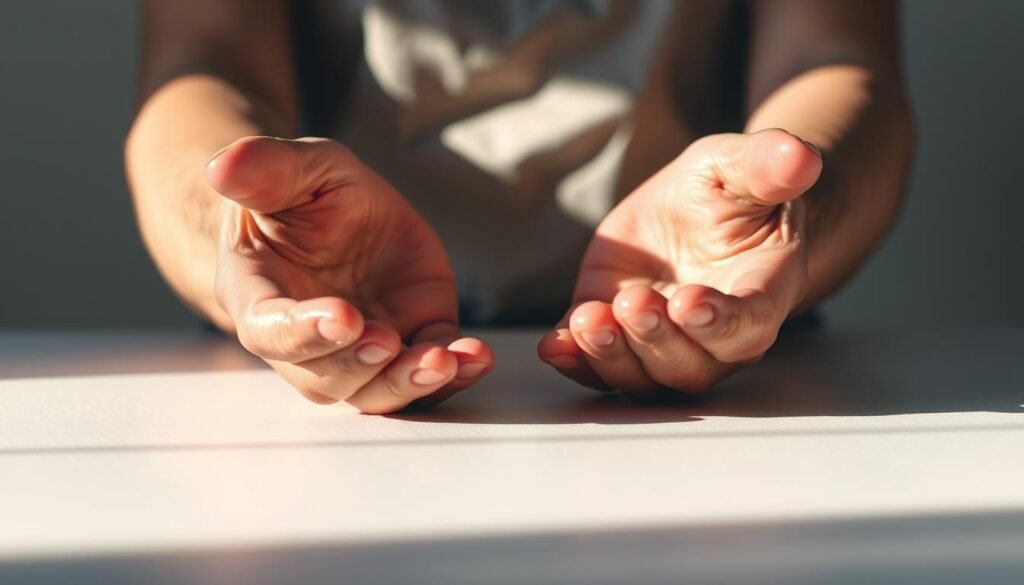
Modifications for Beginners
If you’re new, start with a shorter count like 2-2-2-2. Gradually increase as you get better. You can also breathe in through your nose and out through your mouth.
When and How to Use Box Breathing in Anxiety-Provoking Situations
Box breathing is great for calming your mind and body. Use it before stressful events, during work breaks, or before bed. It’s also good during meditation or yoga. Regular practice makes it a valuable tool for managing anxiety.
Alternate Nostril Breathing for Balance and Focus
Alternate nostril breathing is great for mental clarity and less anxiety. It’s a yogic technique that balances the nervous system and boosts focus. By switching the breath between nostrils, it balances the brain’s hemispheres, leading to calm and balance.
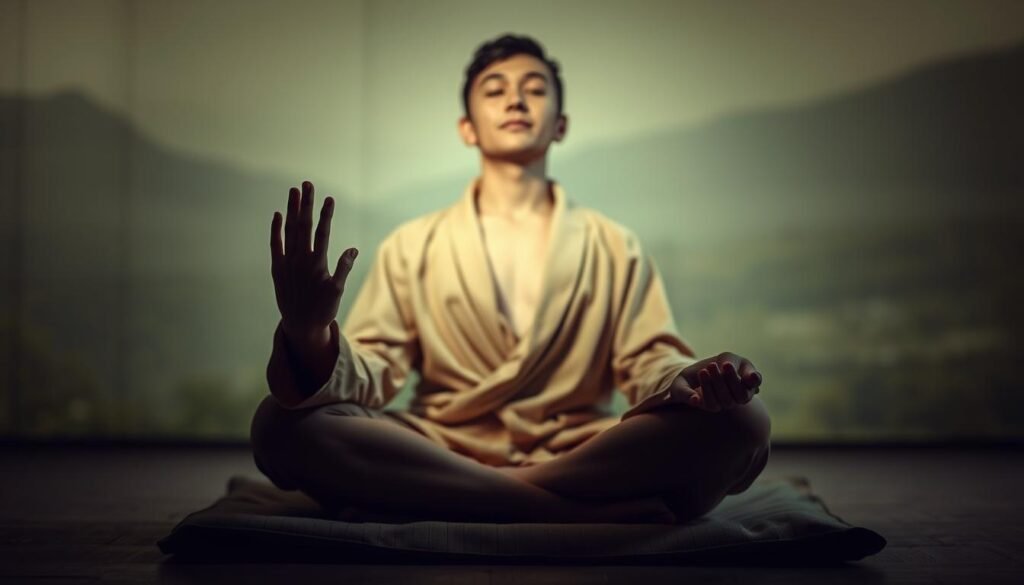
How to Perform Alternate Nostril Breathing Correctly
To get the most from alternate nostril breathing, do it right. You need to know the right hand position, technique, breathing pace, and how long to do it.
Hand Positioning and Technique
Start by sitting up straight. Use your right hand, folding your index and middle fingers. Place your thumb on the right nostril and your ring finger on the left.
Close the right nostril with your thumb and breathe in through the left. Then, close the left nostril with your ring finger and breathe out through the right. Breathe in through the right, close it with your thumb, and breathe out through the left. That’s one cycle.
Breathing Rhythm and Duration
Keep your breathing smooth and steady. Start with equal inhale and exhale counts. As you get better, try different counts, like 1:2 or 1:3.
Start with 5 minutes and increase to 10-15 minutes as you get more comfortable.
Benefits for Anxiety and Mental Clarity
Alternate nostril breathing is great for anxiety and mental clarity. It offers many benefits, including:
- Balances the Nervous System: It balances the sympathetic and parasympathetic systems, lowering stress and anxiety.
- Improves Focus and Concentration: It balances the brain’s hemispheres, improving mental clarity and focus.
- Reduces Stress and Anxiety: This breathing technique has a calming effect, helping manage stress and anxiety.
- Enhances Self-Awareness: Regular practice increases self-understanding and emotional awareness.
Adding alternate nostril breathing to your daily routine can greatly improve your well-being.
Breathing Exercises You Can Do Anywhere
Breathing exercises are great because you can do them anywhere. They’re perfect for public places, when you need to relax fast, or while you’re on the move. There’s a technique for every situation.
Discreet Breathing Techniques for Public Settings
When you need to stay calm in public, discreet breathing is key. Equal Breathing is a good choice. It means breathing in and out for the same amount of time. It’s easy to do without anyone noticing.
This method helps calm your nerves. You can use it during meetings or when you’re waiting in line.
Quick 30-Second Breathing Resets
Need to calm down fast? Try a 30-second breathing reset. Box Breathing and the 4-7-8 Breathing Method are quick fixes. They involve specific breathing patterns that calm your mind and body quickly.
Breathing While Walking or Commuting
Make your daily commute or walk more relaxing with breathing exercises. Breathing in sync with your steps can make you feel meditative. It lowers stress and boosts oxygen flow.
Try this: breathe in for four steps, hold for two, and breathe out for four. It’s simple yet effective.
| Technique | Description | Benefit |
|---|---|---|
| Equal Breathing | Inhale and exhale for the same count | Calms the nervous system |
| Box Breathing | Inhale, hold, exhale, hold for equal counts | Rapidly reduces stress |
| Breathing While Walking | Synchronize breath with steps | Enhances meditation and reduces anxiety |
Incorporating Breathing Exercises into Your Daily Routine
To get the most out of breathing exercises, we should make them a daily habit. This can greatly lower anxiety and boost our overall health.
Let’s see how we can easily add these practices to our daily lives.
Morning Breathing Rituals to Start Your Day
Starting with a breathing exercise in the morning can set a good vibe. Diaphragmatic breathing or box breathing are great for waking up and getting ready for the day.
Mid-Day Breathing Breaks
Mid-day breaks can ease stress built up in the morning. Equal breathing or the 4-7-8 method can be done quietly at work. They offer a quick refresh.
Evening Wind-Down Breathing Practices
In the evening, progressive muscle relaxation with deep breathing can help relax. It tells our body it’s time to sleep, leading to better rest.
| Time of Day | Recommended Breathing Exercise | Benefits |
|---|---|---|
| Morning | Diaphragmatic Breathing, Box Breathing | Energizes, Sets positive tone |
| Mid-Day | Equal Breathing, 4-7-8 Method | Reduces stress, Refreshes |
| Evening | Progressive Muscle Relaxation with Deep Breathing | Promotes relaxation, Improves sleep |
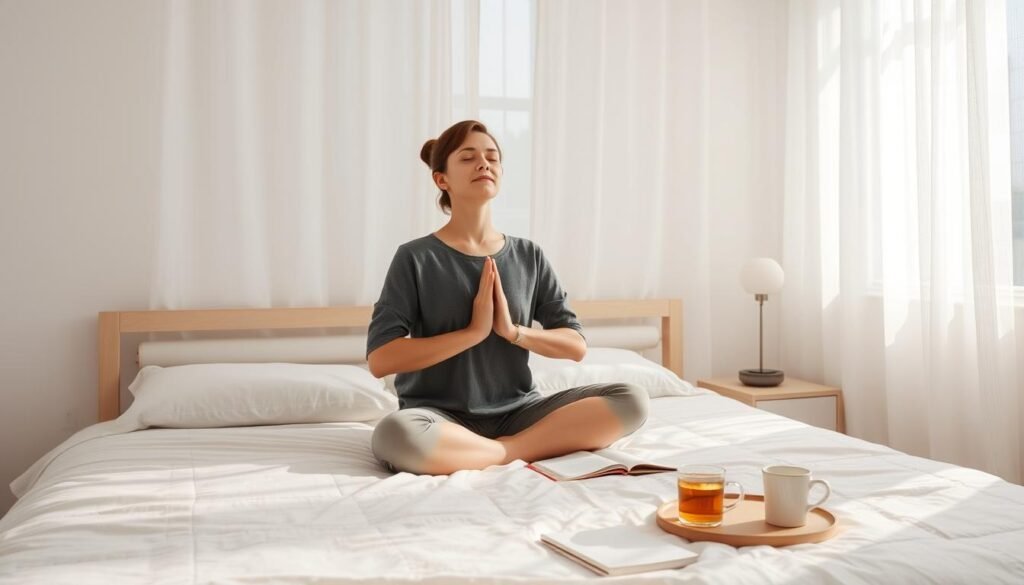
Adding these breathing exercises to our daily routine can help us manage anxiety better. It can also improve our life quality.
Common Challenges and How to Overcome Them
Exploring breathing exercises can sometimes hit a few bumps. These techniques are great for fighting anxiety, but beginners might face some hurdles. We’ll look at common problems and share tips to get past them.
When Your Mind Keeps Wandering
One big challenge is a wandering mind. It’s normal for thoughts to wander, especially if you’re new to these exercises. To keep your focus, gently bring your mind back to your breath. You can also use a simple mental trick, like saying “breathing in” and “breathing out.”
Dealing with Impatience and Frustration
Feeling impatient or frustrated is common when you don’t see quick results. But, it’s key to be patient and kind to yourself. Remember, the benefits of breathing exercises build up over time. To handle frustration, set achievable goals and celebrate small wins.
Adapting Techniques for Different Anxiety Levels
As your anxiety levels change, so might your breathing techniques. For high anxiety, try more active or fast breathing. For low anxiety, slower, deeper breaths might be better. Try different methods to find what works for you.
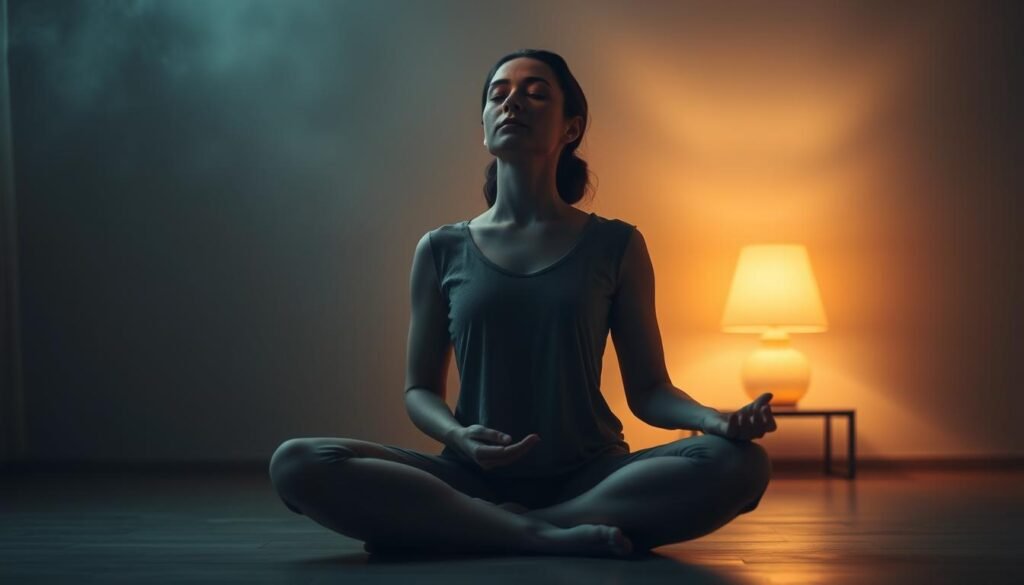
Knowing how to tackle common challenges can make your breathing exercises more effective. This way, you can better manage your anxiety.
Combining Breathing Exercises with Other Anxiety Management Strategies
To get the most out of breathing exercises for anxiety, we can mix them with other strategies. This way, we can make a strong plan to handle anxiety.
Pairing Breathing with Mindfulness Practices
Mindfulness and breathing exercises work well together. Mindfulness helps us stay in the moment and notice our thoughts and feelings without judgment. Adding breathing to mindfulness can help us calm down and feel less anxious. For instance, focusing on our breath during meditation keeps us present and calm.
Breathing Exercises as Part of Physical Activity
Adding breathing exercises to physical activities boosts their benefits. Yoga and tai chi, for example, focus on breathing with movement. This helps us perform better and feel less anxious. It also makes us feel better overall.
When to Seek Professional Help
Even with self-help, sometimes we need a professional’s help. If anxiety is really bad, lasts a long time, or gets in the way of daily life, get help from a mental health expert. They can offer tailored advice, therapy, and, if needed, medication to manage anxiety well.
| Strategy | Benefits | Implementation |
|---|---|---|
| Pairing Breathing with Mindfulness | Enhanced calmness, improved focus | Practice mindfulness meditation with focused breathing |
| Breathing Exercises with Physical Activity | Improved performance, reduced anxiety | Engage in yoga or tai chi that incorporates coordinated breathing |
| Seeking Professional Help | Personalized guidance, therapy, and treatment | Consult a mental health professional for assessment and support |
Conclusion
As we wrap up our look at breathing exercises for anxiety, it’s clear they’re a game-changer. These simple yet powerful techniques can greatly improve our well-being. By adding diaphragmatic breathing, box breathing, and more to our daily routine, we can handle anxiety better and feel calmer.
We’ve talked about different methods, like the 4-7-8 breathing and alternate nostril breathing. Each has its own benefits for reducing stress and helping us relax. The important thing is to find what works for you and make it a regular part of your day.
By practicing regularly, you can gain more control over your breathing and your anxiety. Begin with small steps and be kind to yourself as you try out these exercises. It’s a journey worth taking.

